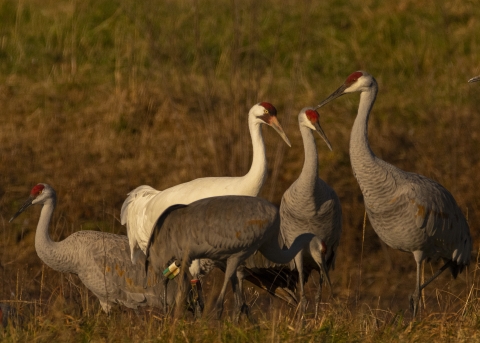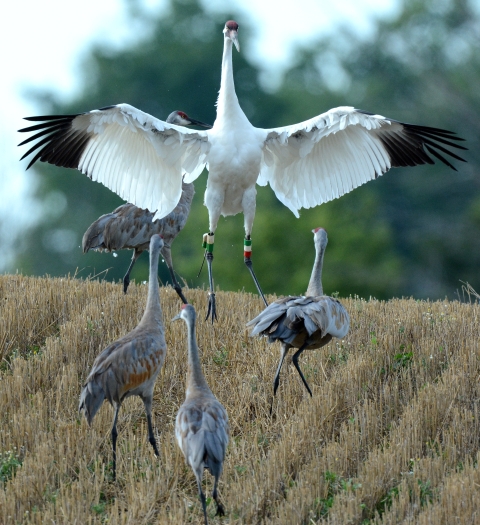Ways to get involved
Notice - Updated on Nov. 14, 2025 - We have begun the envelope fulfillment request process again. If you are a past participant and have remaining envelopes from past seasons, please use those envelopes until we are able to ship your new order. If you do not have any envelopes, please keep your tails or wings until your envelopes arrive making sure to record the date and location of harvest. We appreciate your patience and apologize for the delay and inconvenience.
Hunter information is critical to our understanding of migratory bird populations! Annual participation in HIP and the Diary and Wing surveys contributes to wildlife conservation and management.
- If you plan to hunt migratory game birds, please make sure that the license vendor doesn’t forget to register you for the Harvest Information Program (HIP). Participating HIP registration may rely on state hunting license vendors to ask hunters the HIP questions.
- If you were asked to do so, participate in the Migratory Bird Hunter Survey (Diary Survey) or the Parts Collection Survey (Wing Survey). The Diary and Wing surveys help the USFWS estimate how many ducks of different species, ages, and sex were harvested during a hunting season. The surveys also allow the estimation of species and age-specific harvest for geese. Age and/or sex ratios of the harvest are also used to calculate reproduction rates in species like woodcock, mourning doves, and band-tailed pigeons. Reproduction plays an important role in keeping migratory bird populations stable.
Bird and Wing ID
Hunting migratory birds requires knowledge of the species you plan to harvest. Information such as habitat preferences, diet, and plumage characteristics are all important in confidently finding flocks and recognizing the correct birds to shoot. Below are some helpful resources for identifying birds in flight for your next hunt.
Waterfowl
The USFWS' Ducks at a Distance, a waterfowl identification guide, contains full-color photos and illustrations of 37 duck, goose, and swan species. Learn more about their behavior, migration patterns, and the sounds they make. Also available are flock patterns and wing characteristics that will help you identify North American waterfowl in the field or on the fly!
Doves
There are 4 species of dove that can be hunted in the United States. These species include mourning dove, white-winged dove, Eurasian collared-dove, and band-tailed pigeon. Eurasian collared-dove harvests do not need to be reported to the USFWS because they are a non-native bird species. Band-tailed pigeon can be distinguished from mourning and white-winged doves by their large size. In the hand or using binoculars, they can also be differentiated by a white neck band and yellow bill. The USFWS created a fact sheet that includes identification tips and range maps for these species.
Cranes
Sandhill cranes are the only legal crane species that can be hunted in the United States. They may be confused with whooping cranes, a federal endangered species that migrates from North Dakota to Texas and Wisconsin to Florida. It is important to be sure you know the difference between whooping cranes and sandhill cranes. Below are images of each. The International Crane Foundation also provides some distinguishing characteristics between similar species.
Sexing and Aging Birds in the Hand
Interested to know the sex or age of a bird you harvested? For ducks, aspects of plumage such as feather wear, iridescence, patterns, and more can often tell you how old a bird is and whether it is a male or female. To learn more, watch the Video Series on Duck ID using Wing Feathers or browse through the document, Species, Age and Sex Identification of Ducks Using Wing Plumage. If you are interested in learning how to age or sex a woodcock, check out the Sexing and Aging American Woodcock guide put together by Michigan DNR.
Our Partners
Partners that assist in the Harvest Information Program, Diary Survey, and Parts Collection Survey efforts can be found within the Acknowledgements and Appendices of the following reports:


